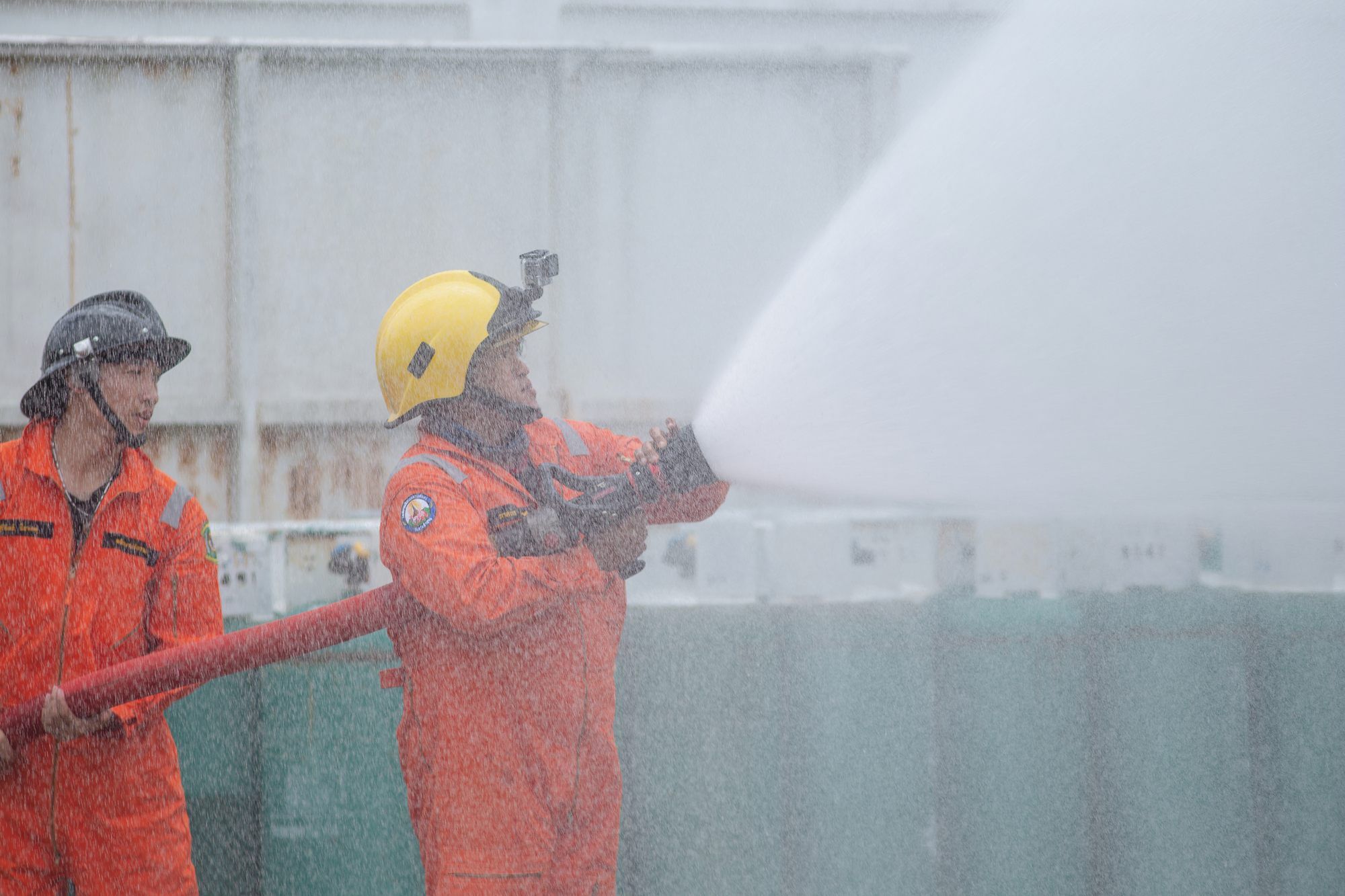Top Class Actions’s website and social media posts use affiliate links. If you make a purchase using such links, we may receive a commission, but it will not result in any additional charges to you. Please review our Affiliate Link Disclosure for more information.
Drinking water is one of those basic human necessities that we often take for granted, but not all places — even in the United States — have clean drinking water. In some areas, including certain highly populated ones, drinking water may even be contaminated by toxic chemicals.
This is because toxic AFFF foam (the kind used by firefighters) may be making its way into the drinking water and making it dangerous to drink. Ingredients in the foam have been linked with an increased risk of developing cancer.
This firefighting foam allegedly made its way into the drinking wells of Peshtigo, Wisconsin. In January 2021, chemical makers agreed to pay the residents of the Wisconsin town $17.5 million for the damage the foam has allegedly caused. This is the first settlement in the toxic firefighting foam litigation.
If you or someone you love has developed medical conditions or cancer after exposure to AFFF firefighter foam, you may be able to file an AFFF foam cancer lawsuit.
What is AFFF?
Aqueous Film-Forming Foam (or AFFF) is a type of fire suppression foam used by firefighters and in other fire protection situations. AFFF foam was first developed in the early 1960s after the U.S. Naval Research Laboratory (NRL) researched potential fire suppression tools.
Now, it is widely used all across the country in a variety of locations. For example, in June 2021, a chemical plant in northern Illinois used AFFF after the location was engulfed in flames.
AFFF foam is particularly used in situations where there is highly flammable liquid hazard, like airports and oil refineries. Areas where AFFF are kept for fire suppression response include not just fire stations, but also:
- Chemical plants
- Highway emergency response
- Merchant operations (oil tankers, offshore platforms, etc.)
- Oil refineries, terminals, bulk fuel storage farms
- Aviation operations
- Military facilities
- Flammable liquid storage and processing facilities
How does AFFF foam work?
AFFF is a firefighting tool specifically geared toward extremely hazardous flammable liquid fires. When used, AFFF produces an aqueous film that spreads over the fire’s surface to quickly extinguish the flame—hence the name, aqueous film-forming foam. Essentially, the aqueous film produced by AFFF suppresses flammable liquid vapor, thereby suffocating the fire hazard.
Perhaps an even more essential component of this fire suppressant substance is the foam, which prevents hot fuel from reigniting.
What is the difference between AFFF and FFFP?
AFFF is a synthetic, water-based foam, while FFFP (film-forming fluoroprotein) is a protein-based foam, containing a natural protein as its foaming agent. Protein foams like FFFP are biodegradable. While protein foams flow and spread more slowly, not acting quite as immediately as AFFF, these foams are ultimately more heat-resistant and more durable. These protein-based foams are also safer for use.
 Is there an AFFF foam cancer link?
Is there an AFFF foam cancer link?
Unfortunately, despite its efficacy as a fire-fighting substance, AFFF foam is considered dangerous. Indeed, the Environmental Protection Agency (EPA) and other groups have said that AFFF foam presents a risk to both human health as well as environmental safety.
AFFF contains fluorine chemicals known as per- and polyfluoroalkyl substances, or PFAS. PFAS are dangerous, the EPA says, for a few reasons: they do not degrade, dilute or disappear over time, and they can travel through groundwater and soil. PFAS have been linked with a number of very serious health issues, including cancer, liver damage, thyroid disease, cardiovascular issues and more.
PFAS are used not only in AFFF, but also in common products like paper packaging, stain-resistant carpets and furniture, non-stick cookware (teflon) and more.
The government has begun responding to the problem of toxic PFAS, including those in AFFF foam. For instance, the Federal Aviation Administration (FAA) Reauthorization Act was passed by Congress back in 2018 to allow commercial aircraft manufacturers and U.S. commercial airports to opt out of PFAS-containing foams. In October 2021, the FAA urged airports to limit the amount of AFFF used due to the potential for health and environmental consequences.
The Department of Defense is also conducting research into AFFF because of the risks associated with the substance, and are now looking for safe and effective alternatives. This pursuit is understandable, as it was noted by military.com that PFAS contamination from firefighting foam was found at 700 bases.
Have any AFFF foam lawsuits been filed?
A number of plaintiffs have turned to litigation after exposure to PFAS. For instance, the 3M company, a major manufacturer of AFFF foam, is currently facing a number of class action lawsuits alleging the company knew of AFFF’s significant human health risks, but continued to market the products anyway.
Other AFFF manufacturers have faced similar litigation, including Tyco Fire Products, Chemguard, Buckeye Fire Equipment and National Foam.
Should you file an AFFF foam lawsuit?
If you or someone you love has been diagnosed with a potentially AFFF-related cancer after exposure to the substance, you may be able to file an AFFF foam lawsuit and pursue compensation. Filing a lawsuit cannot take away the pain and suffering caused by a cancer diagnosis, nor can it bring a loved one back to life, but it can at least help to alleviate the financial burden incurred by medical expenses, lost wages and more.
ATTORNEY ADVERTISING
Top Class Actions is a Proud Member of the American Bar Association
LEGAL INFORMATION IS NOT LEGAL ADVICE
Top Class Actions Legal Statement
©2008 – 2024 Top Class Actions® LLC
Various Trademarks held by their respective owners
This website is not intended for viewing or usage by European Union citizens.
Get Help – It’s Free
Join a Free Firefighting Foam Cancer Class Action Lawsuit Investigation
If you qualify, an attorney will contact you to discuss the details of your potential case at no charge to you.
PLEASE NOTE: If you want to participate in this investigation, it is imperative that you reply to the law firm if they call or email you. Failing to do so may result in you not getting signed up as a client or getting you dropped as a client.
Oops! We could not locate your form.


 Is there an AFFF foam cancer link?
Is there an AFFF foam cancer link?










